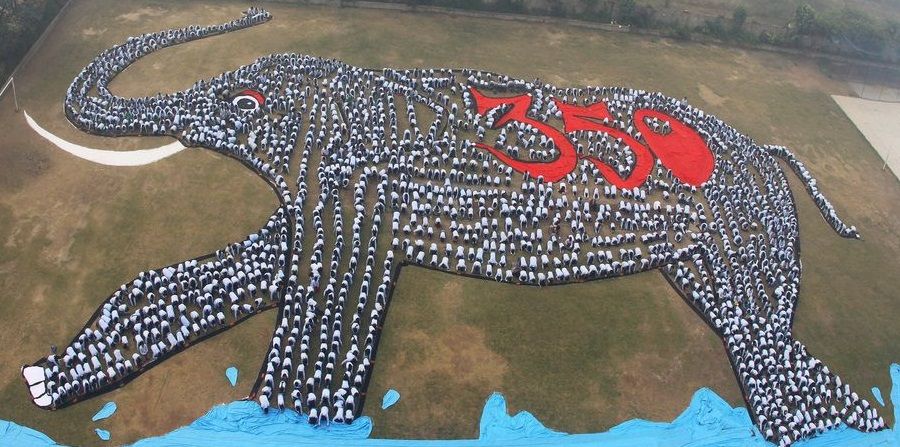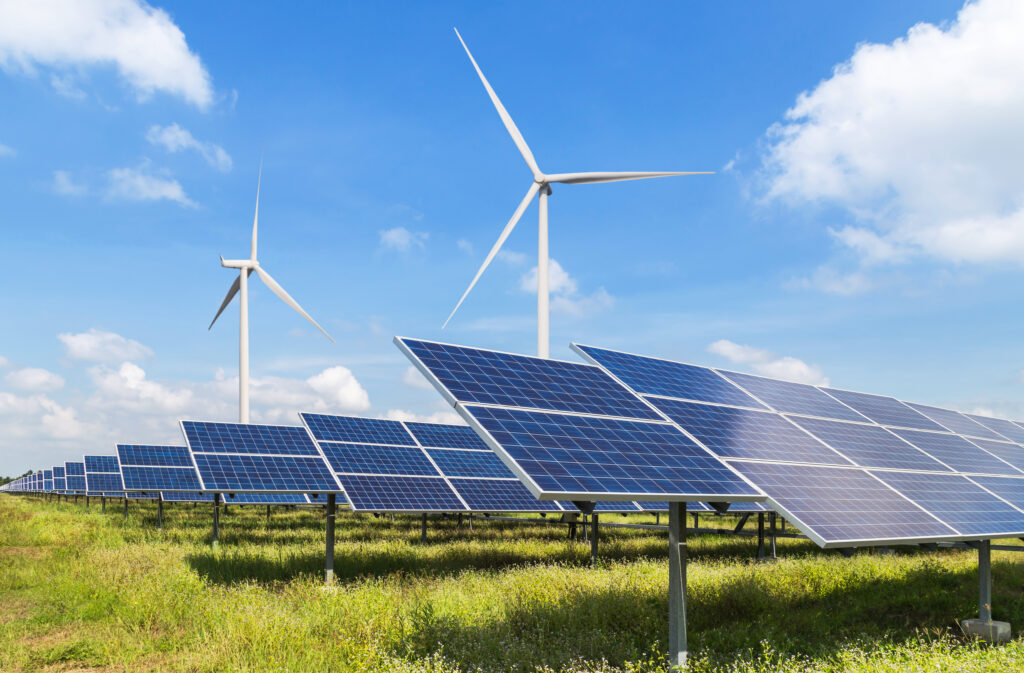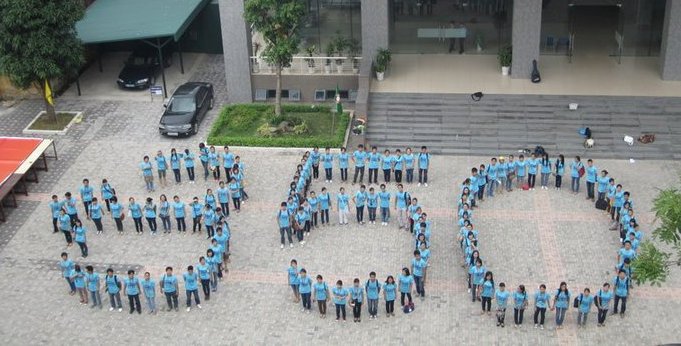
Main author: Nicholas Dimmock BA MBA (CASS), Director of Investor Relations, 350 PPM Ltd.
Economic commentary by the 350 PPM research team. Contributions from companies 350 PPM Provides Consultancy to.
HEADLINES IN ORDER OF FUNDING (EXCEPT WITH SUBSIDUARIES)
Solar 350 & Subsidiary: PAPA ONE LTD:
Signs Co-Development Contract with Mexican Developer / Construction Company in Mexico, for co-development of pre-construction development of utility scale solar sites. Watch The PAPA One Video here.
350 PPM:
Continues Development of Defined Exit Milestone Crowdfunding Platform and launches campaign to find further projects. Also, 350 PPM has commenced the process for gaining full UK authorization to be regulated by the FCA. Watch The latest PPM Video here.
Storelectric:
Seeks Institutional Funding to Develop First Site To Ready to Build, seeks further sites for energy storage and hydrogen production. Watch The Latest Storelectric Video here.
Waste to Energy Solutions LTD:
The first three projects with a total construction capex of nearly £300 Million have been scrutinized by several large Investment banks and further Due Diligence is currently being undertaken. Seeks additional sites for pre-construction development. Watch the latest WES Video here.
Plastic Green Power LTD (previously Power On Demand Services LTD):
Progresses development of its Smart Energy Plants, hires Corporate Finance Advisory. More information here.
CONTENTS

Company Updates
Solar 350 Ltd (S350) / PAPA ONE Ltd (P1)
350 PPM Ltd (PPM)
Storelectric Ltd (STL)
Waste to Energy Solutions Ltd (WES)
Contact Information
Risk Warnings
Sector & Business Case Analysis
COP 25 in Madrid was a bit of a disappointment. However, there are some significant issues that need to be worked out and I can understand the positions of India, China and Brazil and other developing and least developed nations that are resisting increasing the ambition of the treaty.
Australia is still vacillating, and the US appears to be trying to derail the process.
Here are the issues at hand with a bit of a preamble:
- The current commitments under The Paris Agreement should ensure global temperatures stay within 2 degrees of pre-industrial times. 2 Degrees will cause a good amount of chaos but keeping temperatures within this range will require investment of circa 2 trillion USD per year. Thus, any losses in global GDP from land or housing loss, breakdowns in supply chains, civil unrest, forced migration, loss or damage as a result of storms will largely be mitigated through economic expansion within the environmental sector.
- The purpose of COP 24 (the recent meeting in Madrid) was to increase the ambition of the treaty (effectively getting countries to re-submit their INDC’s with increased ambition) you can see the existing ones here to finalize the Carbon Incentivisation Schemes, which are referred to as Article 6 of The Kyoto Protocol and are now morphing into “The Sustainable Development Mechanism (SDM) and finalize and “the rule book” of The Paris Agreement.
- You can read about the major developments in detail here
- Article 6 of The Paris Agreement is designed to create a fungible United Nations backed asset, based on achieving an emission reduction. There is some logic to this as if the root of the problem is emissions – the solution is naturally emission reductions. Previously, this form of subsidization led to circa the creation of 10,000 environmental projects under The Clean Development Mechanism (CDM) and Joint Implementation (JI) of The Kyoto Protocol. (More colloquially, this is a mechanism to put a price on carbon.)
- If you analyse the emission reduction results of the European Union Emissions Trading Scheme versus the project bases incentives (CDM and JI), the projects win every time. My calculations are that just 332 environmental projects achieved what the EU ETS achieved over the same time frame.
- The current intentions are that the mechanisms of the Clean Development Mechanism will be updated to create The Sustainable Development Mechanism (The SDM). The SDM will then create a fungible subsidy called an ITMO (Intended Transferable Mitigation Outcome). The ITMO will be awarded to any project of process that reduces emissions (under similar rules as before – additional, local benefits, no harm etc), and these ITMO’s then will be traded on exchange and can be utilized in emission trading schemes around the world or can count towards companies emission reduction obligations.
- The Issues: Greta, who I think could do well to smile a little more, pointed out in her final speech that “the COP seems to have turned into some kind of opportunity for countries to negotiate loopholes”. This sets the scene nicely for the “horsetrading” we see below. Here are the positions:
- Australia and Brazil want to be rewarded for “looking after” the world’s forests / carbon sinks / lungs.
- I am in favor of this and this can be achieved through UNFCCC Methodologies of Afforestation and Avoided Deforestation or similar. All of the world needs to be incentivised to look after the forests especially when there is competition from agriculture.
- Australia wants the AAUs (Assigned Amount Units) issued to it under the Kyoto Protocol to be eligible for use in The Paris Agreement and for their “retirement” to count towards their emission reductions under The Paris Agreement. AAUs are sovereign emission permits allocated to countries under The Kyoto Protocol, which they could then utilize to operate emissions trading schemes and keep a tally of their overall emissions obligations. Australia argues that these are effectively genuine emissions currency and they are simply left over because Australia has managed its emissions so well. They negate to mention that the reduction schedules under The Kyoto Protocol were so unambitious most developed world countries have millions of these
- I am not in favor of this: developed countries were given them for free. Nevertheless they do represent an emission asset.
- China, India and other developing world countries want Certified Emission Reduction (CERS or emission reduction assets generated from environmental projects under The Kyoto Protocol) to be eligible for use under The Paris Agreement.
- I am broadly in favor of this: If you look at the text of the European Union Emissions Trading Scheme, the arrangement was always; commit to binding emission reductions and you can monetize your emissions reductions through our emissions trading schemes.
- Many other developing world / least developed countries have submitted conditional / tiered reduction pledges, increasing their ambition if there is additional support from the developed world.
- Australia and Brazil want to be rewarded for “looking after” the world’s forests / carbon sinks / lungs.
- So in short, there is a lot of work through.
- America’s lack of leadership means all the other minions are voicing their opinions. It didn’t help that Puerto Rico caught the brunt of the hurricane season. If the US had received another Storm Sandy, this may have been enough to sway public opinion, although I don’t think Donald Trump is suitable in any way to oversee global climate change negotiations. A significant storm next year along the eastern seaboard, could be enough to get him out of office. Hurricane season is 1st June, to 30th November – US election is 3rd November.
- However, regardless of any significant policy support from UN subsidization 181 GW of renewable were added in 2018 (the last year we have figures here), representing investment of 289 Billion USD. The problem is that to keep temperatures within 2 degrees of pre-industrial times, we need 1000 GW a year of renewable and similar investment into carbon abatement and energy efficiency projects – something that the development of the subsidization / incentivisation mechanisms of The Paris Agreement / The Sustainable Development Mechanism would incentivise.
- The fact is, that unless the Sustainable Development Mechanism is agreed, the world will not hit its Paris targets even as they are now. Fundamentally, the SDM will put additional subsidies on the table that will make good environmental projects even more economically attractive, it will increase the scope of economically attractive projects from straight renewable (where we are now) to a variety of other methodologies (more diverse renewable, energy efficiency, carbon abatement) and, the thorny issue, it will most likely involve the developed world opening its emissions trading schemes to the new fungible subsidy. Which means there’s a cost to it, which will most likely be borne by the countries that reduce their emissions less than other countries. It will also allow capital to flow to projects that reduce emissions at lower costs and will increase global trade. Only when the SDM is agreed and implemented will the Environmental Revolution achieve investment flows of 2 trillion USD per year.
SOLAR 350 LTD / PAPA ONE LTD Starting Price: £2.50 per share
Starting Price: £2.50 per share
Current Price: £24 per share
We are currently lining up all of Solar 350’s Projects to be fed through to pre-construction development via PAPA ONE LTD, its subsidiary as detailed below.
It is acknowledged that there is a huge amount of interest by institutional investors in the sector at present. However, out of the 100 plus institutional investors we contacted in 2019, the majority needed to have their expectations managed to a more realistic level with regards to the solar market and the energy markets of South America as a whole.
Our strategy now is to develop, and construct said sites and then sell them off once operational.

Starting Price: £0.20 per share
Current Price: £0.26 per share
As a result of the huge early interest in PAPA One shares, the management team decided to pause their equity fundraising round in the fourth quarter of 2019. This round is expected to re-open in May 2020 to complete the fundraising required for project delivery.
PAPA One has a signed Shareholder Agreement with an established local development partner to co-invest in the first development project. This agreement defines the 51:49 investment obligations of both parties, implemented through a newly created UK SPV, 51% owned by PAPA One. This UK SPV owns the Mexican project SPV that will fund and operate the local project.
Luis Novella, Solar 350 Chairman – +44 20 7101 0735
350PPM LTD

Starting Price: £0.125 per share (post-split)
Current Price: £3.40 per share (post-split)
2019 was our best year so far in terms of revenue, profits and expansion. We run the business on cash generated and made our profits from the acquisition of shares in companies we have consulted for.
We have recently put a proper board in place and these chaps are hopefully going to take us to the next level. You can see who is involved by clicking the following link and scrolling down: https://350ppm.co.uk/
Let me just take you through the basic plan:
So far we have assisted with the development of 5 project development businesses and 3 project sites.
The project development businesses focus on different environmental technologies: Solar, Waste to Energy, Energy Storage, and Plastic to Peak Power Generation. We see the above technologies as vital components in the fight against climate change.
In order to maximize our potential, we have sought to gain control of the early part of the project development value chain through building positions in Project Developers and also increasingly funding the pre-construction development of their projects. If we look at Solar Development, as a general rule under current market conditions, Pre-construction developments costs are around 10k per MW, and can generally achieve 100k per MW on onward sale of the ready to build asset.
Construction is around 1M per MW, 35% equity / 65% debt and the asset on a merchant contract should generate around 16% yield after costs. However, on onward sale to a Pension Fund, once an investment grade PPA is in place, a 25% uplift versus the construction value.
So accordingly, on a 100 MW project, Capex is 100M, equity is 35M, debt is 65M, annual yield is 16M – (Assuming these yields remain stable, a hold for 2 years should translate to 32M) and onward sale of around 125M (25M gain). Thus, not accounting for taxes or time value of money: an investment of 35M in could yield 57M out. It’s a great business if you can raise the money, which I think we now can.
Thus, the next step for 350 PPM is going to be increasing funding to individual projects to get them to the point of “Ready to Build”. Solar 350/PAPA ONE will also now be increasing its ambitions in regard to developing partnerships (or scaling them if they are already in existence), with local developers in Mexico, with a view to expanding into Brazil, Columbia, Chile and South Africa in due course.
350 PPM will then replicate this process with other environmental technologies, hopefully throughout the world. 350 PPM board has commenced the process for gaining full UK authorization to be regulated by the FCA and we are targeting a valuation of 100M GBP within 5 years.
STORELECTRIC LTD

Starting Price: £0.25 per share (post 1:100 share split)
Current Price: £1.45 per share (post 1:100 share split; latest model price £1.53)
Please note that on 18/12/2018, a Storelectric share split took place. This had no effect at all on the valuation of Storelectric as a whole or individual shareholdings in Storelectric. For each 1 share that an existing shareholder used to own, the shareholder now holds 100 shares, at a price that is 1/100th of the pre-split price. To repeat, there is zero overall effect for existing shareholders. The split was performed so that new shareholders could buy at £1.15 per share and not £115. This is a more practical and psychologically comfortable value.
FUNDRAISING
For those new to Storelectric, the six-word pitch is ‘enabling renewable to power the world’. This is achieved by storing renewable energy on a large-scale using Compressed Air Energy Storage (CAES). CAES works by using electricity to compress air, then expanding this air through a turbine when needed. Storelectric is now working with NAM, the largest energy company in the Netherlands, jointly owned by Shell and Exxon. There is a video introduction to Storelectric available.
For further information, please contact your Investor Relations Consultant
WASTE TO ENERGY SOLUTIONS LTD

Starting Price: £0.08 per share
Current Price: £0.25 per share
Directors Report Q4 2019
Waste to Energy Solutions Limited (WES) have continued, over the last few weeks to further engage with large Infrastructure Banks who have offered strong intentions to work very closely with WES in the funding of the shovel ready projects.
We can confirm that the funding we are looking to have financial close on this year (2020) currently centre on three major projects in Corby, St Helens and Immingham.
WES are also, over the coming weeks, tying up additional sites for development, where advanced negotiations have taken place recently. We are now choosing the best projects for the benefit of both the WES team and their shareholders.
The first three projects with a total construction capex of nearly £300 Million have been scrutinized by several large Investment banks and further Due Diligence is currently being undertaken. We hope to announce a move to financial close on the first projects in the coming months.
Some of the Future projects have been identified in Scotland, Hertfordshire, Somerset, Wales and the Midlands with additional projects also currently being looked at.
Apart from the major Infrastructure Banks WES have been looking at other ways of funding different waste to energy projects, JV’s with large scale waste companies and also some of the boutique investment groups who are now looking closely at Waste to Energy as an investment sector.
WES has now got to bring all projects together contractually with all aspects of the development stages including negotiating with our EPC partners, feed stock suppliers and energy off-takers.
For Further Information please contact:
Phil Allan Tel: 07803 266 166 Email: phila@wastetoenergysolutions.co.uk
Paul Campbell Tel: 07565 880 660 Email: paulc@wastetoenergysolutions.co.uk
UPDATE MARCH 2020*
Waste to Energy Solutions (WES) have continued to move forward on various fronts and are putting in place the infrastructure to be able to develop parallel projects. This has seen some frenetic activity over the last couple of months and some major announcements to be made.
WES’s key activity is the development and preparation of Waste to Energy projects from an initial concept stage through to Ready to Build status. WES already have several sites that have exclusivity agreements in place and part of the work of WES is to bring their skills and expertise together to ensure each project can pass due diligence of the capital funding groups who will acquire the projects from WES and build out the projects.
WES already have a leading EPC contractor in place called SENER who are a multi billion-dollar organisation. SENER will work with a proven German technology called Michaelis, who are currently building a similar sized reference plant in the UK for a major waste company on the scale that WES are developing. This plant together with existing plants they have already built in Germany and other parts of Europe demonstrates to the major infrastructure funds that they have a bankable technology that works and is proven. A key for the infrastructure banks who have seen a plethora of technologies fail and some severe financial losses incurred
WES like the infrastructure banks, prefer to use a technology process called a moving grate, which thermal oxides the waste and does not produce a gas from which the power is generated. The Thermal oxidization via a boiler produces a steam from which a turbine is operated to produce electrical power. The clean up of the toxins during the Thermal Oxidization process ensures no pollution to the environment is made and operates well within the European Standards for a clean burn process. Most of the large waste to energy plants in the UK and around the world all follow this process. However, most of these existing plants have been large scale and waste is brought to these sites from long distances causing a negative carbon footprint.
WES have from the start sought to develop smaller more localized plants effectively reducing the carbon footprint and ensuring small scale plants deliver a localized waste disposal solution, and the benefits of a local power and heat provision benefits to the local community. This follows the Scandinavian model where similar solutions have operated successfully for many years.
WES can now announce a new step forward in this concept, having recently made an agreement with a Finish Technology called WOIMA, who have created a small but modular solution, where even smaller waste to energy plants can now be considered from 25,000 tonnes pa, upwards, effectively a small local council region. WES are finalizing the agreement for an exclusive arrangement between WOIMA and the team at WES to put in place these solutions. WOIMA in turn have also put in place a very important strategic alliance with Sumitomo Heavy Industries (SHI) a worldwide multi-billion-dollar organisation an agreement where SHI act as their EPC and also provide a lot of the plant equipment, such as the boiler, framework and heavy parts of the plant from their own worldwide manufacturing facilities.
WES believes that the strength of a modular build moving grate / steam and turbine solution will revolutionize the waste to energy sector, and a site can now be built with a single WOIMA line and be added to very easily and at relative low cost as the site waste volumes and demands increase. This is a very exciting time to look to now develop many more localized plants cost effectively and quickly because the scaling up of the modular build will lead to reduced capital costs and quick build times. Compared to very long lead times of large plants and the associated problems with planning acceptance for the larger plants.
As part of this collaboration WES are also finalizing the civil engineering partnership with P J Carey one of the UK’s premier civil contractors and who have massive experience in waste to energy plants. Carey will focus on all the groundwork and prepare the foundations on which WOIMA/SUMITOMO will then build out the plant. The combination of expertise from large companies ensures the plants are built with a solid team behind them and further supports WES in their ambitions to become the leading developer in this small / medium sector of waste to energy.
* Opted to include this late submission from WES for March 2020.
Phil Allan
Managing Director
Waste to Energy Solutions
Tel 07803 266166 Email phila@wastetoenergysolutions.co.uk
1.3.2020
PLASTIC GREEN POWER LTD

Starting Price: £0.08 per share
Current Price: £0.25 per share
PLASTIC GREEN POWER WINTER REPORT – Q4
PGP (Plastic Green Power Ltd), originally approached 350PPM as Power on Demand Ltd (PODS) in August 2018.
PODS business proposition was to develop Gas Peaking Plants that would utilize natural gas to power fast response gas engines that would deliver electricity to the grid at times of peak demand or when intermittent renewable energy generators were not producing (e.g. when there was no wind or sun, or both).
Gas Peakers were seen as a Fast Response energy solution (<5 minutes to meet peak power demand from cold start). Battery energy storage technologies are seen as emergency power supply due to their ability to discharge in seconds, with the much needed long duration energy storage provided by other solutions such as pumped hydro and compressed air energy solutions, such as those being developed by Storelectric Ltd, another 350PPM client.
A previous ‘boom’ in these Gas Peaking projects, as the UK Government brought in significant subsidies (the Capacity Market mechanism) had turned to a nasty ‘bust’ as many developers mothballed their ambitions due to a challenge from the EU over the Capacity Market and balancing services subsidies. This had left many projects stranded.
PODS strategy was to salvage these semi-developed projects, aggregate them and find funders to build out the projects with the expectation that the capacity and balancing subsidies had to be restored at some point. This is necessary as the UK and EU transitions from large-scale (>250 MW) fossil fuel generation to smaller-scale (<250 MW) intermittent renewable. Due to efficiency and cost reductions of gas peaker technologies (5-50 MW), this strategy would become an absolutely vital part of the energy infrastructure requirements, plugging gaps etc.
You can watch 350PPM’s initial investigations into the viability of Gas Peakers here.
Essentially, PGP saw Gas Peakers as a necessary evil in transitioning to renewable energy and ‘net zero’.
At the time, 350 PPM had also been investigating Plastic Recycling (the report is here) and suggested to utilize plastic as a feed stock to create a green gas (via a process of pyrolysis) to power gas peakers with gas blending for decarbonisation. Under this configuration, PGP could create a demand for non-recyclable plastics (currently polluting the planet) and provide low carbon Fast Response power to the grid facilitating the transition to intermittent renewables. This model and concept is highly replicable and has global potential, subject to revenue values and security in different countries.
Accordingly, PODS, which had not raised any funding, was mothballed and Plastic Green Power Ltd (PGP) was formed in July 2019.
Since this point, PGP has made very significant progress and formed partnerships with various organisations, the aggregation of which has led to plans for new types of energy generation plant whose working title is ‘ReGasGen’. This stands for recycling and renewable gas generation, which can be used for power production as well as transport fuel manufacturing as that sector decarbonises as well. The ReGasGen concept has the following functions:
- Waste Grading using automated optical sorting technology to grade all types of waste, in particular plastics. This is a proven technology for which one of PGP’s partnering firms has UK projects sites and is working with a national waste aggregator for a long-term contract of significant value. The top grade plastics are turned back into monomer chemicals for remanufacturing into plastics.
- Unrecyclable paper and card are pelletised/cubed and sold to businesses needing biomass feedstock.
- Lower grade plastic and other combustible wastes are gasified, to create a green gas that is then compressed either for use in gas peaking engines on site or for resale (green gas trades at significant premium to natural gas and is due to increase in value as the price of pollution permits / carbon increases).
- Gas Peaker’s run on green gas and dispatch power to the grid at times of peak power demand (for peak energy prices) or directly to companies seeking to guarantee energy supply, such as factories.
- Batteries are charged by the gas peakers and are ready to provide energy to the grid in emergency situations (for maximum energy prices). PGP is looking into bio-based battery energy storage technology as well.
Full plans are under development for the construction of these sites in ‘phases’ and added value will be gained from full integration of all the complimentary technologies on larger ‘super-sites’. The characteristics of the UK Government leadership towards ‘zero carbon’ by 2050 and many corporations even sooner, the PGP strategy with its partners provides the ideal timing for sustainable growth and innovation at commercial scale.
In summary, these conclusions and market positioning statements are based on the following:
- Wind is unreliable and intermittent, with a doubling of installed capacity in the next 10 years.
- It is unlikely that Europe will provide enough energy to the UK via interconnectors at times of high domestic energy demand, especially as other countries close large-scale coal and nuclear power stations.
- Solar power is very land intensive and the UK has relatively low solar irradiation compared to other countries.
- Due to population density in the UK, waste is plentiful and while we can reduce waste it cannot be avoided. The reliance on source separation and collection for ‘recycling’ is costly and carbon intensive, so has not been effective. Investment in ‘reprocessing’ infrastructure for plastics has been negligible.
- Electricity prices are likely to both increase in price and volatility in the coming years leading to increased profitability of the plants.
- The integration of technologies combined and the synergies created provides increased profitability.
- The combination of revenue streams gives greater resilience. This includes revenue from:
- Waste processing contracts (i.e. from gate fees)
- Sale of extracted metals and biomass pellets/cubes
- Sale of compressed green gas
- Sale of Fast Response power
- Sale of emergency power
In terms of recent progress for establishing a first ‘round’ of shovel ready projects:
- PGP has engaged with James Cowper Kreston LLP as financial advisor for project fund-raising, tax structuring, financial modelling and financial/business advice. The team has significant experience in financial modelling in the waste and recycling sector.
- Preparing for fund-raising and due diligence to bring the initial round of projects to financial close. This will include:
- Commercial and technical due diligence for both plastics recycling and gas peakers.
- Continued investigation of advanced thermal treatment (ATT) technology partners (e.g. pyrolysis).
- Permitting and grid connection planning for a South Wales site.
- Planning expansion for West London site for ATT demo..
- Financial & tax advisers (fees mostly due on financial close of projects fundraising) to cover fundraising (including information memorandum), financial modelling and tax structuring with advice on deal terms.
- Legal advisers (fees mostly due on financial close of projects fundraising) for funding documents, EPC, PPA / balancing market access agreement, off-take agreements, feedstock supply agreements and group structuring documentation.
The initial raise for the first round of projects totals £55m, which will then bring in a number of significant fees into PGP. Additional SEIS/EIS investment of £750k is now needed to complete the due diligence work with external, independent advisors to conclude this process within the next 4-6 months. This includes preparation and provision of a full set of supporting documents for the investment case.
CONTACT INFORMATION
Tel: +44 (0) 203 151 1 350
Email: info@350ppm.co.uk
Level 1, Devonshire House, 1 Mayfair Place, London, W1J 8JA, United Kingdom.
To contact us by email, use the contact us page.
RISK WARNINGS
Information contained within this post has been supplied by client companies or taken from sources considered by 350 PPM Ltd to be reliable, but no warranty is given that such information is accurate or complete and it should not be relied upon as such. 350 PPM Ltd will not be responsible for any loss or damage of any kind which arises, directly or indirectly, and is caused by the use of any part of the information provided.
The value of your investments and the income from them can fall as well as rise. An investor may not get back the amount of money invested. Past performance and forecasts are not reliable indicators of future results. Currency denominated investments are subject to fluctuations in exchange rates that could have a positive or adverse effect on the value of, and income from, the investment.
No representation or warranty is given as to the availability of EIS relief / reliefs. Since the requirements to fall within the EIS must be monitored all the time it is possible that if the requirements are met today, they might not be tomorrow. Investors should consult their professional advisers on the possible tax and other consequences of holding such investments.



Wow cuz this is great work! Congrats and keep it up.